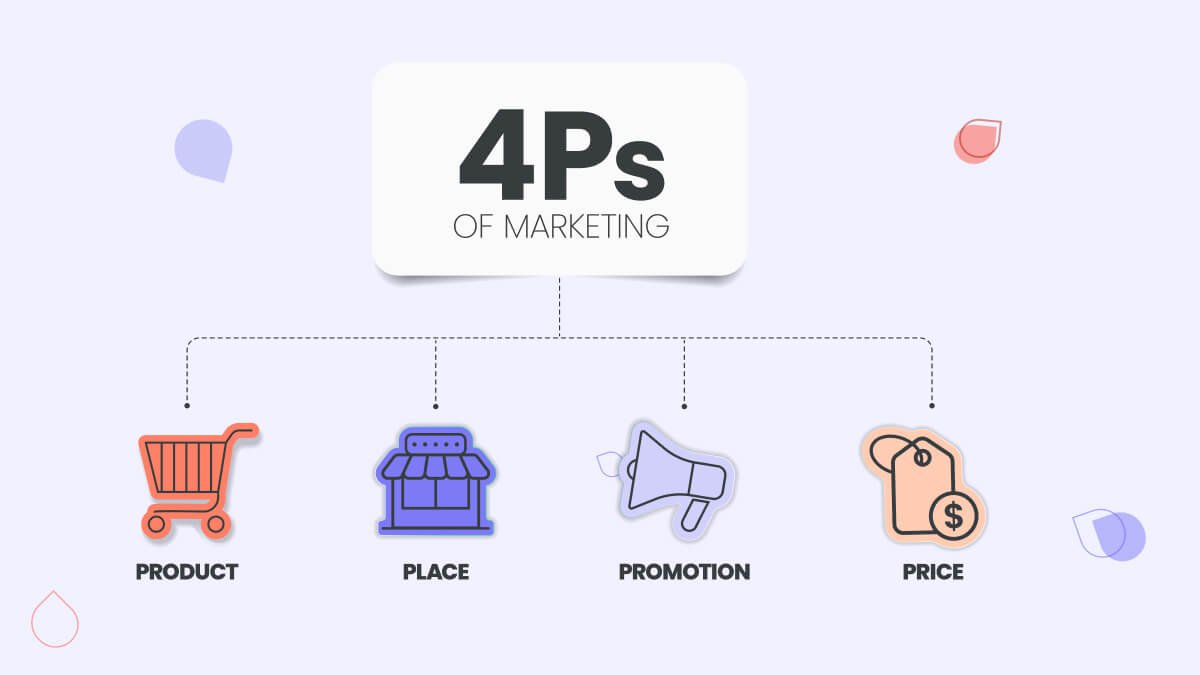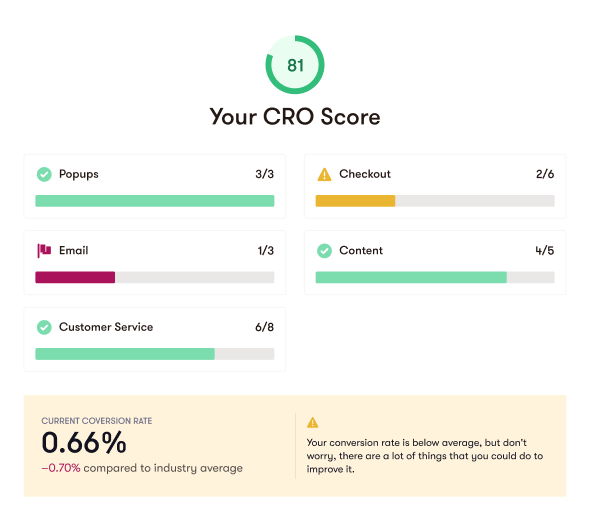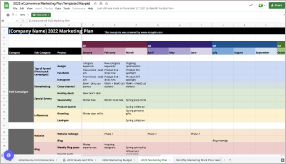
Marketing Mix: The 4Ps of Marketing and How to Use Them Effectively
Learn how to use the marketing mix (often called the 4Ps of marketing) to get the right combination of place, price, promotion, and product for your business.
DOWNLOAD TEMPLATEIf you want to scale your business you need to have a successful marketing strategy. And we know that. But when you ask any marketing professional - what goes in my marketing strategy? They're going to start listing various tactics they've learned.
- You should hire an influencer!
- No, you should send more email campaigns!
- Double down on organic social media!
But that's not a strategy, those are tactics. A solid marketing plan starts way before that, it starts with something called the marketing mix.
A marketing mix is a tool that helps you identify your target customer, set goals, and develop a plan of action for reaching them.
The marketing mix is usually described as a framework called the 4 Ps. It's crucial to understand how the four Ps of marketing—product, price, place, and promotion—work together to bring new customers into your business.
What is a marketing mix and why is it important?
The marketing mix is a set of 4 or 7 elements that define the marketing strategy for a product or service. The marketing mix helps you to create a successful marketing planner, which means that you will be able to reach your target audience better, sell more products, and make more money.

This framework helps companies focus their marketing on what really matters, make better business decisions, and create better marketing campaigns. It helps brands reach their potential customers, clarify their marketing objectives, and improve product development and promotional techniques.
The marketing mix affects everything from product marketing, pricing strategy, promotional strategy, brand positioning, and all the various marketing efforts of a business.
What are the 4Ps of marketing?
The 4 Ps are:
- Product - What you're selling
- Price - How much it costs
- Promotion - How people hear about your product (e.g., advertising)
- Place - Where people can buy it (e.g., stores, platforms).

Product
The product is the tangible or intangible good or service you are offering to your customers. The product is what you are selling and what the customer receives in exchange for their monetary payment. The product is the physical, tangible item that represents your brand—the actual thing sold on store shelves or delivered to customers' homes.
Place
The product is the tangible or intangible good or service you are offering to your customers. The product is what you are selling and what the customer receives in exchange for their monetary payment. The product is the physical, tangible item that represents your brand—the actual thing sold on store shelves or delivered to customers' homes.
Price
Price is the amount of money consumers pay for a product or service. In business, price is one of the most important elements of the marketing mix, alongside product, promotion and place. Price should be carefully managed because it's often used as a way to communicate value and quality in your brand.
When setting prices for your products or services, you have to consider:
- How much does creating your product cost you?
- What does your competition charge for comparable products/services?
- Do they have higher or lower margins?
- Are there any gaps in pricing that would allow you to enter those spaces successfully?
Pricing research is super important for any brand as it helps to determine what to price a product at. One factor is tracking your competitor’s pricing and then comparing that to your own, based on seasonality and product type.
Promotion
Promotion is the communication of your product or service to your target market. It's the way you deliver your message via digital and physical channels through your branding strategy. It can take many forms including advertising, personal selling, public relations, sales promotion, and direct marketing are just a few examples.
How to use the 4Ps of marketing in your marketing strategy
The 4Ps of marketing is a framework used to create a marketing strategy. They can be used to help you understand the marketing mix, which includes the four key elements of product, price, place, and promotion. Once you have learned about each of these elements, use them to develop your own unique business plan that will help you reach your goals.
The history of the 4Ps
The 4Ps were created by E. Jerome McCarthy in 1960 who presented them within a managerial approach in his book "Basic Marketing: A Managerial Approach". The book covered things like analysis, consumer behavior, market research, market segmentation, and planning. Philip Kotler popularized the approach and helped spread the 4Ps model.
Alternative marketing mix models
There are several other approaches in marketing that are just as powerful and effective if you apply them correctly. First, let's talk about the 5 Ps.
The 5 Ps
This framework was invented by Philip Kotler, a distinguished professor of international marketing at the Kellogg School of Management at Northwestern University. He is also known for popularizing the definition of the marketing mix.

The 5th P is people
The people element of the 5P’s includes the attitude, customer service, appearance, and service provided by the employees of the company. It’s particularly critical for service-based businesses but can also play an important role for firms that sell products.
How did the 5Ps become the 7Ps of marketing?
The 5 Ps of marketing worked for a while but marketers slowly realized that there are other elements that aren't covered by the model. So in 1981, Booms and Bitner proposed a model of 7 Ps which comprise the original four elements plus three new ones - people, process, and physical evidence (or physical environment).

What are the 7Ps of marketing?
The 7Ps are known as the extended marketing mix and they are:
- Product - Your product or service.
- Price - How much you will charge for the product or service.
- Place - Where you will sell your product or service (e.g., online, in a physical store).
- Promotion - The way you advertise your products to get customers interested in buying them (e.g., social media posts and billboards).
- People - The people who work for you, including managers and employees of your business (also known as stakeholders).
- Process - Processes and systems that help run your business smoothly (often referred to as operations).
- Physical evidence - the physical place where your brand exists (a store) or the environment where the actual purchase takes place.
Seven service principles
There's an alternative approach to the 4 Ps that was suggested by Peter Bowman in his book "Service 7". Bowman created something called the seven service marketing principles which include - value, business development, reputation, customer service, and service design. This framework is widely used in Australia.
The 4Cs of marketing
Another popular framework is called the 4Cs of marketing which stands for - consumer, cost, convenience, and communication.
- Consumer - instead of focusing on the product this model focuses on the consumer. Here is where the brand would write out their ideal customer profile and create effective marketing strategies to build and promote a product that solves their challenge.
- Cost - price is only part of the equation and this framework takes a broader view of the cost of satisfying a customer need. This could include the cost of time in acquiring the product, the cost of conscience by consuming it, and the cost of not going with the competitor's product.
- Convenience - brands aren't limited to physical channels and they could have quite a number of channels in their digital marketing mix. These could include the various platforms, digital storefronts, social media channels, and online distribution channels for their product.
- Communication - this last area represents a broader focus on how the marketing tools and platforms the brand uses to communicate with its customers. This could include display ads, public relations, personal selling, direct marketing, influencer marketing, and much more.
Takeaways
While the marketing mix is a great tool for marketers to use, it’s important to remember that it’s not a perfect model. The 7Ps model has its limitations and doesn’t always work for every company. It can be difficult to determine what your target audience wants if you don’t know who they are or how they behave, which is why understanding your customer base is crucial before trying any marketing strategy.
Remember that there are other ways of looking at the 4Ps or 7Ps of marketing such as Seth Godin's Purple Cow model (purple cows being unique products that stand out from others in their category) as well as Neil Patel's Growth Hacking strategy (growth hacking being focused on user acquisition).
Need help tuning your marketing mix? Talk a Free Consultation from one of Mayple's experts today!
















